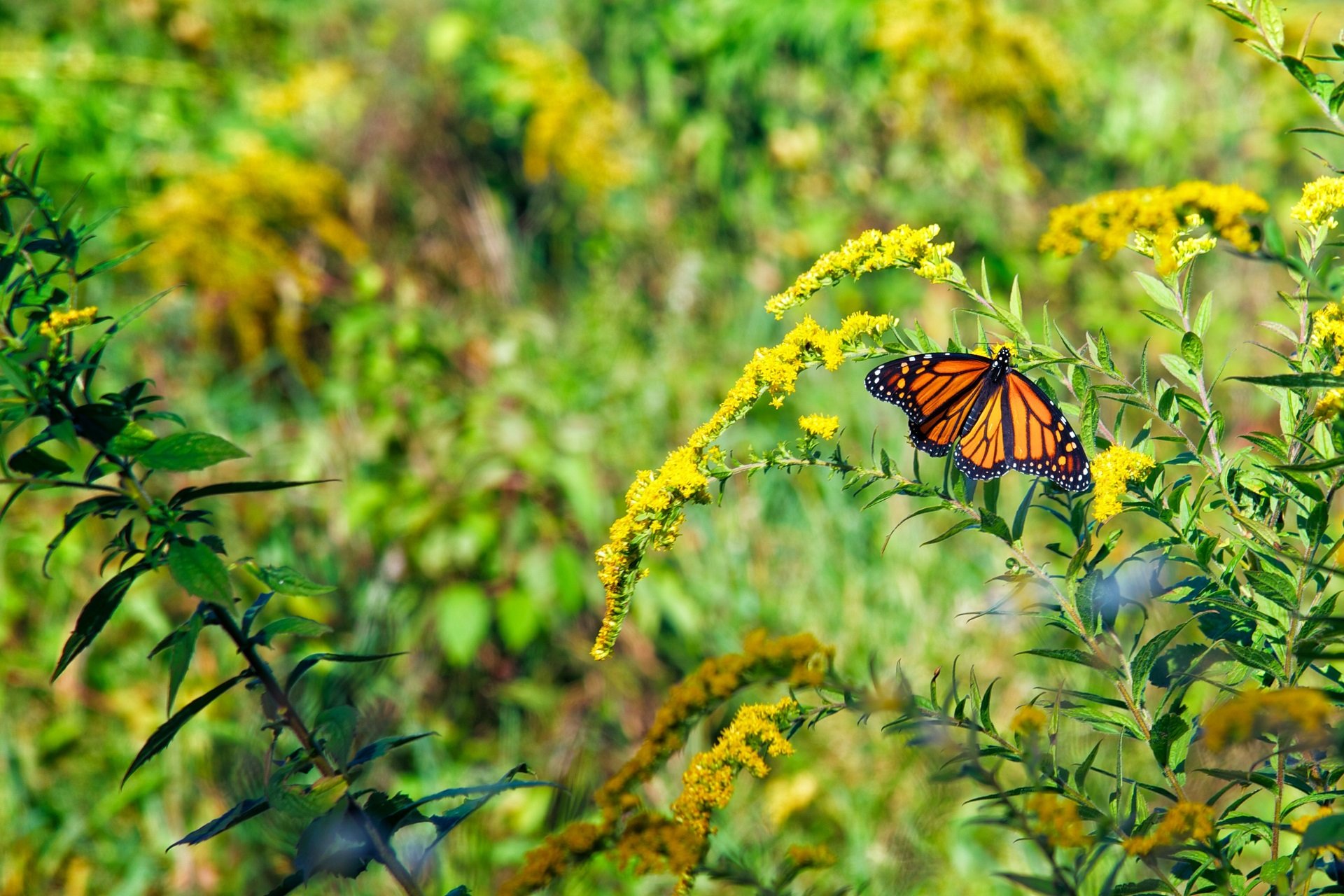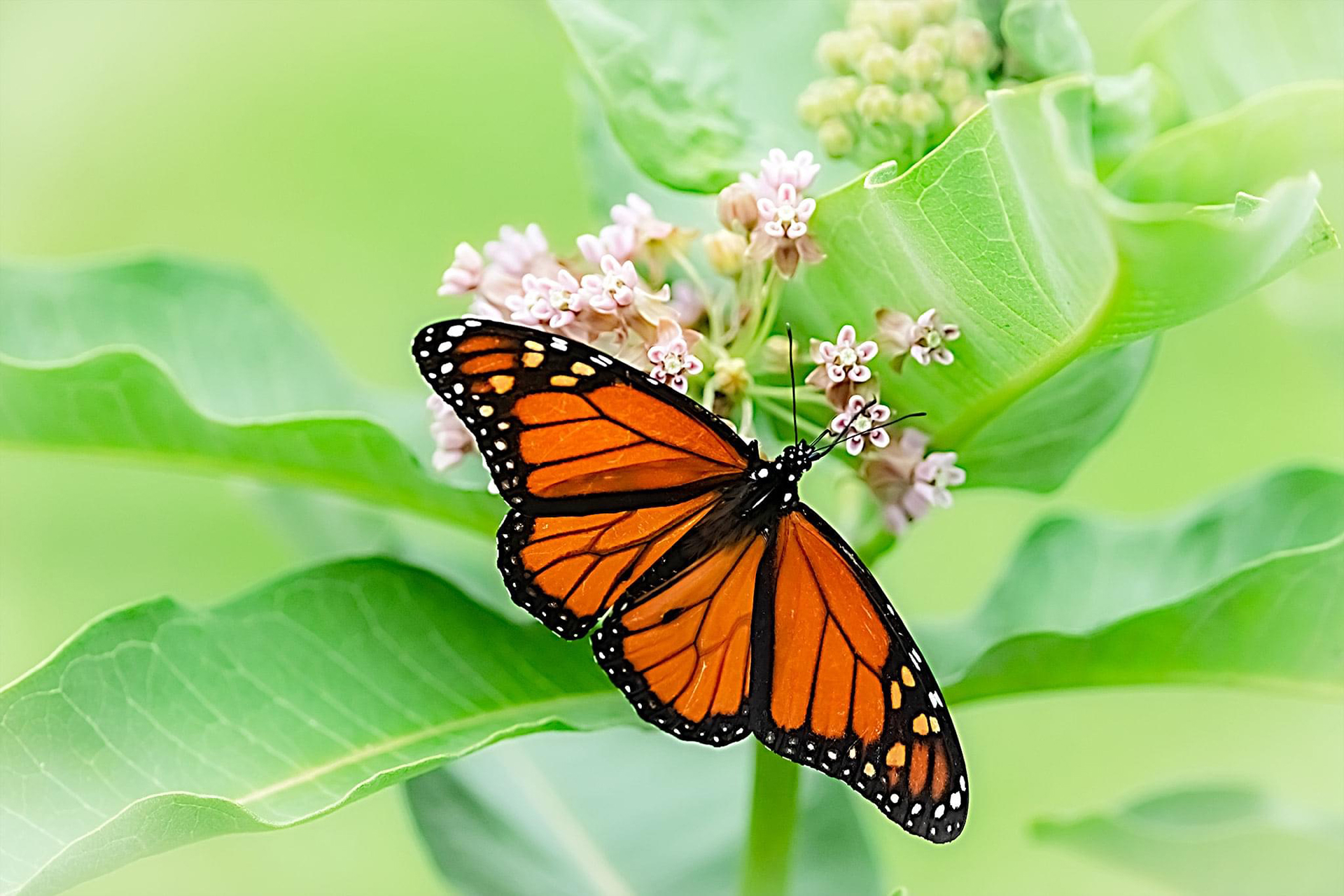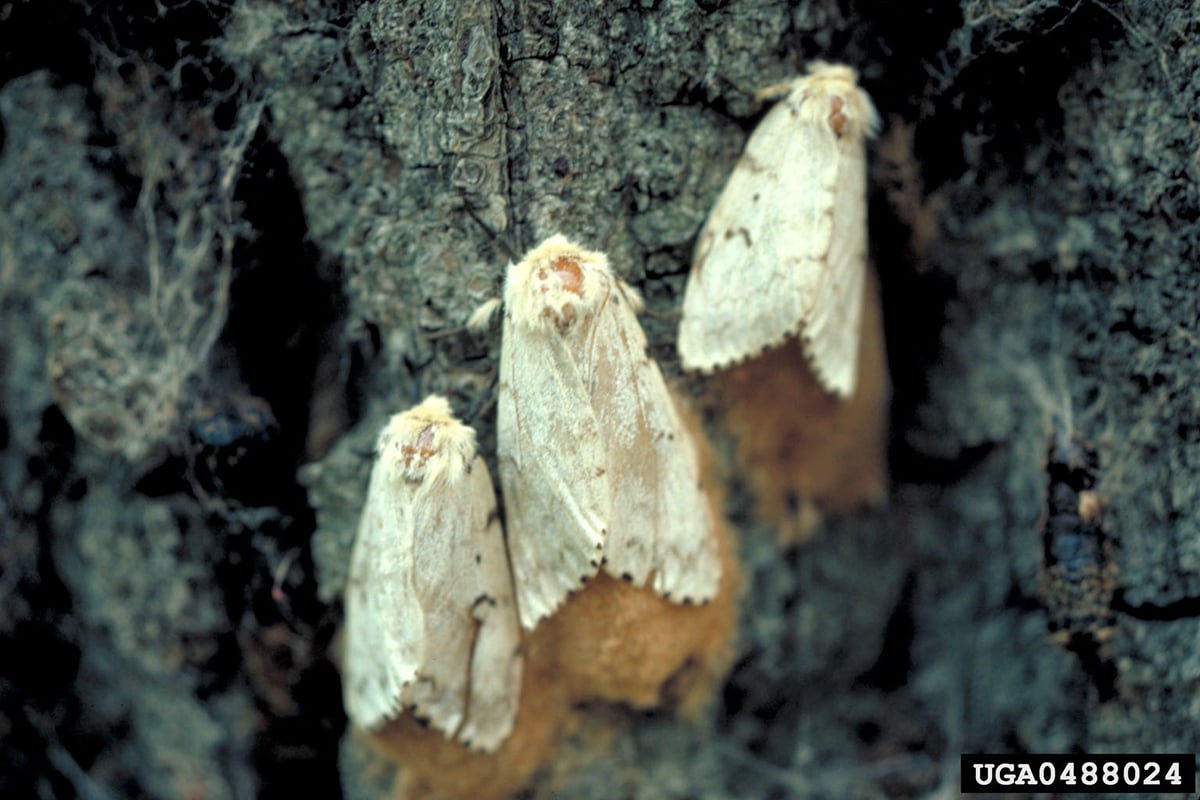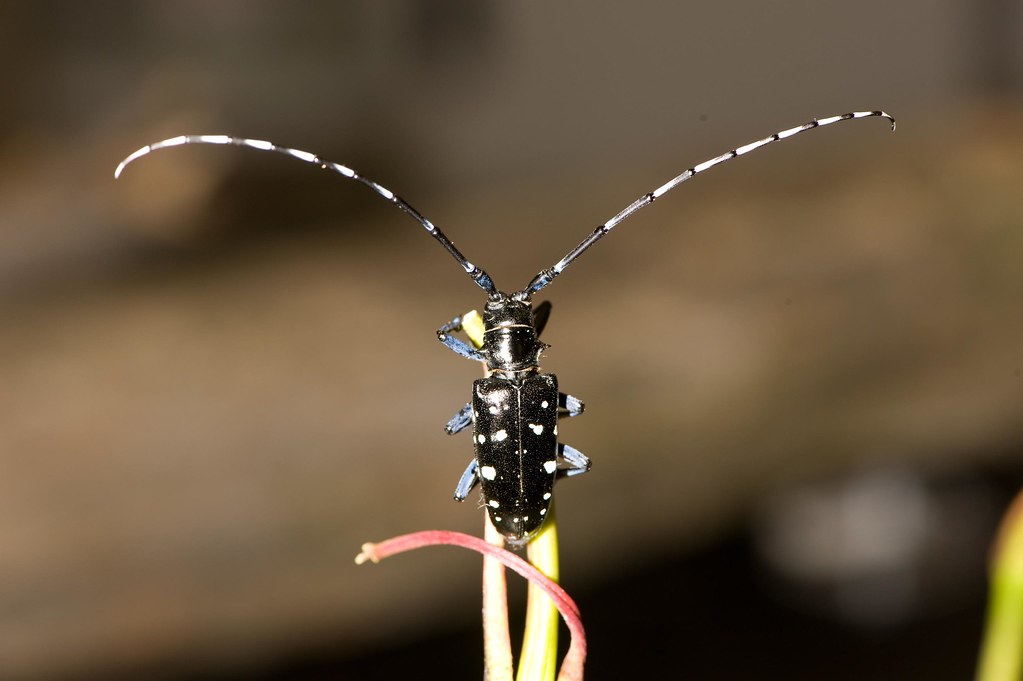Butterflies in Massachusetts
Monarch Butterflies
Monarchs (Danaus plexippus) are a beloved species among insects. There’s a thrill that comes from spotting the first Monarch of the year, flitting about in a sunny meadow in search of sweet nectar.
Monarch populations have declined over the past 30 years, with recent overwintering numbers in Mexico well below what scientists think is needed to sustain the eastern North American population. Actions to support monarchs across their life cycles will be important to securing the future of the species.
How to Identify a Monarch Butterfly
Monarchs are well known for their vibrant orange wings with black veins and black borders with a white polka dot outline. They can easily be confused with the Viceroy (Limenitis archippus), but Monarchs are somewhat larger and lack a black band across the hindwings.
Monarchs have a wingspan of 3 ½ - 4 inches. Males have an extra black spot on their inner hindwing. Look also for their powerful, gliding flight pattern.
How Monarchs Migrate
Monarchs perform a unique and magnificent, 3,000-mile migration, leaving their overwintering sites in February or March, having bred before departing. Those adults lay eggs in the southern US/northern Mexico; adults from the 2nd generation continue the northward flight, with individuals arriving in Massachusetts by late May being part of that 2nd or even 3rd generation.
These spring/summer Monarchs may only live for 2-5 weeks as adults, in contrast to the overwintering, long-distance migrants, which can live from 6 to even 9 months. It’s the last generation of the year that has the potential to make the long trip back to the Mexican overwintering sites, beginning in September.
Life Cycle of a Monarch
Female Monarchs deposit 1-3 eggs on the underside of a milkweed leaf, where larva will hatch a few days later and immediately consume the remains of the egg. The larva feeds only on the milkweed, and as it continues to grow, will go through a series of four molts.
During molting, the black, yellow, and white skin split and the caterpillar emerges with new skin underneath. Each stage of growth takes 1 to 3 days, depending on temperature and feeding success, except the last, which can take 3 to 5 days.
At the end of its fifth growth stage (called an instar), the caterpillar will generally leave its milkweed plant host to find a place to metamorphose into an adult butterfly. . In preparation for this, the caterpillar builds a silky anchor onto vegetation and hangs upside down. It sheds the last layer of skin while still holding on to the silky web, and forms a chrysalis. Generally the chrysalis stage takes 8-15 days.
Following metamorphosis, the adult Monarch butterfly breaks through the chrysalis with wet and fragile wings. After expanding them with fluid, the new adult will wait an hour or two before the wings harden to fly off in search of sweet flower nectar.
What Monarchs Eat
While Monarch caterpillars only eat milkweed, adult Monarch butterflies visit at least 33 different species of flowers each year, including many asters and goldenrods. As they flutter from plant to plant, they pollinate in the process, making them a welcomed guest to any garden, field, or meadow.
Threats Monarchs Face
Since the 1990s, 80% of the overwintering Eastern Monarch butterfly populations have dropped. According to the Xerces Society for Invertebrate Conservation, the dramatic decline can be linked to the loss of milkweed and climate change.
How Mass Audubon Protects Monarchs
Many of our wildlife sanctuaries have specially-managed gardens designed to support wildlife, including monarchs. We have seven butterfly gardens and five other pollinator and wildlife gardens. These gardens are teeming with bright flowers to attract and support bees, butterflies, and other pollinators.
Mass Audubon also maintains fields in our wildlife sanctuaries by yearly mowing to encourage milkweeds and nectar sources for butterflies.
What You Can Do to Protect Monarchs
You can help monarch populations return and thrive by:
- Planting milkweed and other pollinator-friendly flowers.
- Urging your state legislators to support proposals that put conservation first! Speak up
- Support conservation by becoming a member or making a donation.
Stay Connected
Don't miss a beat on all the ways you can get outdoors, celebrate nature, and get involved.







